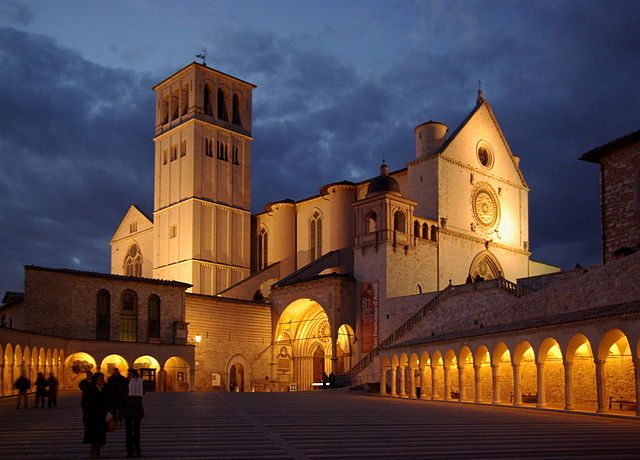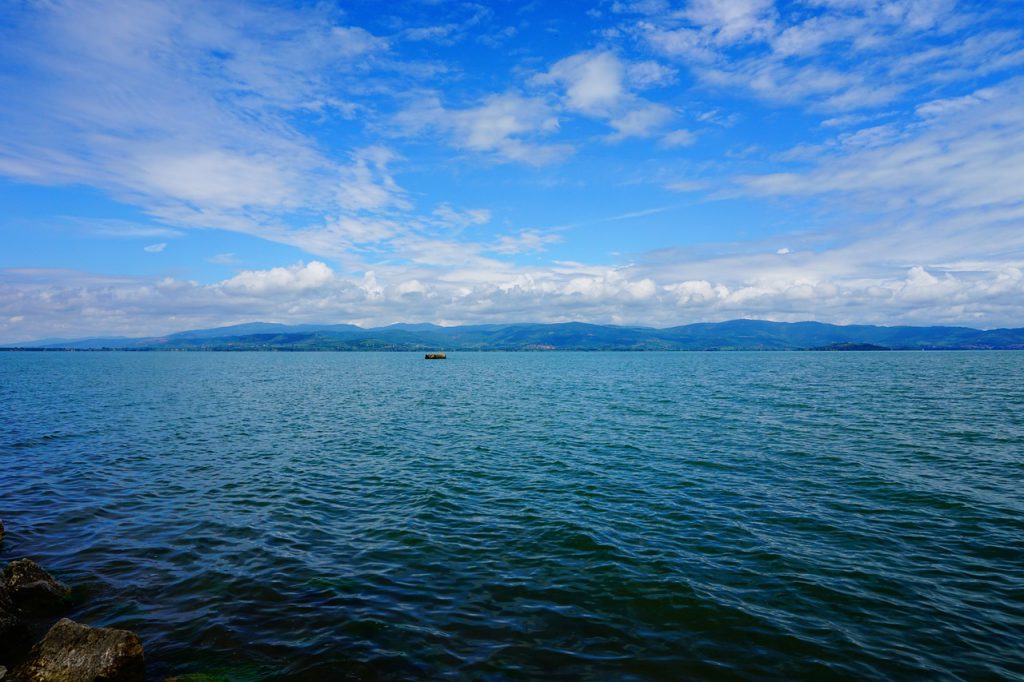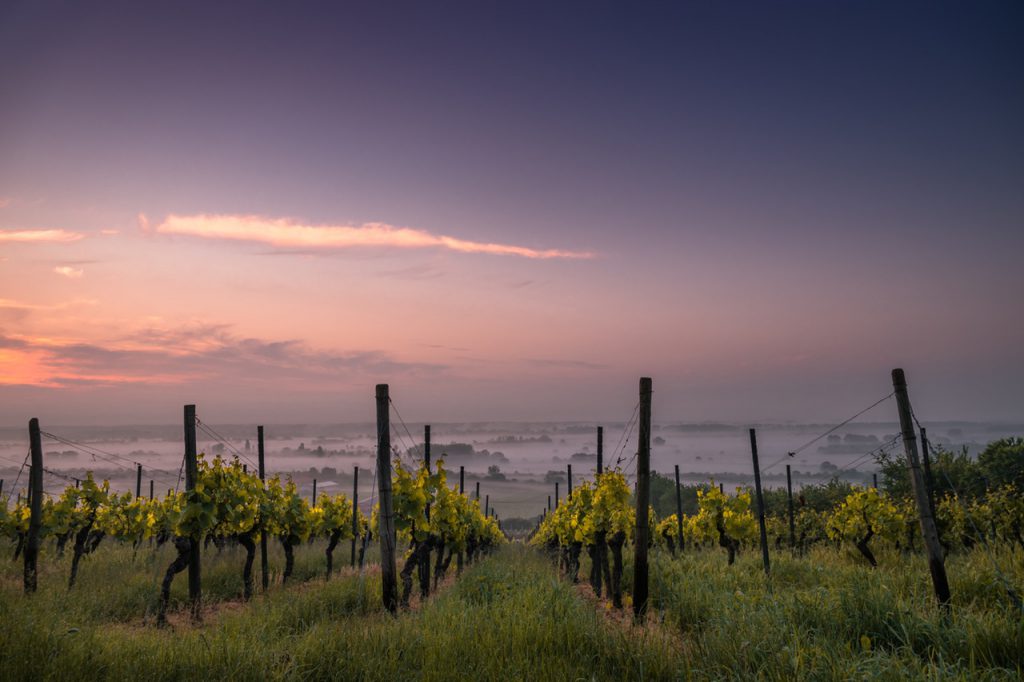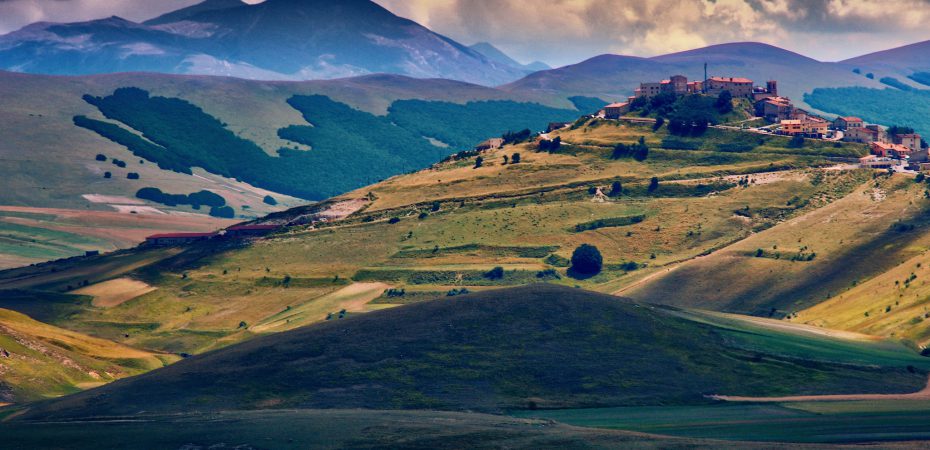While many lovers of Italy seek property in the renowned places of the country, such as Rome, Venice and Florence, there is a hidden gem in amongst these Italian giants. The region of Umbria, known as the green heart of Italy due to it bordering no other country and its endless and idyllic countryside, will offer you a truly authentic Italian life, without the bustling tourist crowds. However, if you’re looking for a holiday home that can offer you some extra income when you are not there, you can look to buy property near Assisi and Perugia that gets year-round visits from Catholic pilgrims, students and holiday makers.
The cascading hills, flowered meadows and beaming sunshine await you at your dream Italian abode. The region boasts an intriguing history and culture that will leave you captivated with the smallest region of Italy. Expect peace and quiet for your Italian home in Umbria, with many picturesque medieval towns nestled on the hilltops that look over the valleys of olive groves and the patchwork hills. Umbria bestows anyone who walks through the town of Assisi a richly spiritual experience, a feeling that will never get old; whilst the little medieval town of Perugia is a hub of intelligence, with one of the oldest universities residing here, having been established in 1308. Fast-forward to the present day and Perugia is still deeply rooted in education, being the home of the biggest university for study abroad students in Italy. Coupled with an extensive artistic heritage and a refreshing sense of community, you will be enfolded in Umbria’s warm embrace as you become one of the locals.
For these reasons, investing in Umbria property for sale has been particularly popular with international buyers. Umbria is home to old stone farmhouses that are hidden in the olive groves and are perfect for buyers looking for a project to be proud of. Alternatively, buyers can choose from the luxury villas perched on the hills that have panoramic views of the surrounding countryside or opt for traditional townhouses, along the cobbled streets of the medieval towns.
Umbria has many UNESCO (United Nations Educational, Scientific and Cultural Organisation) sites to boot! Inclusive of the pilgrim paradise of Assisi, the church of San Damiano, the Sanctuary of Rivotorto and its historical landscape, Palazzo del Capitano, the Tempietto del Clitunno, the church of San Salvatore in Spoleto, the Basillica of Santa Maria degli Angeli and L’eremo delle Carceri. All of which are a truly wonderful visit, each and every time you go.

Of all the UNESCO sites, Assisi is probably the most visited. The city is the birthplace of two very important saints in Italian history: Saint Francis and Saint Clare. Because of this, the city is one of the main destinations for many Catholica pilgrims each year. This saintly city calls to anyone who admires architecture, with its outstanding white-stone buildings that glow in the soft light of dusk.
Just as beautiful of the medieval towns is the surrounding landscape around them. The luscious green hills of the region are perfect for hikers, bikers and horse riders, with the terrain being suited for all these hobbies. Or alternatively, talk a stroll through the olive groves and vineyards that cover much of the region. Be sure to visit one of the oldest olive trees in Italy, which is an astonishing 1700 years old!
If you’re in need of some water, head over to Lake Trasimeno, that is close to the border of Tuscany. This lake is Italy’s fourth largest lake and this 128 sq. km clear water lake is set amongst a hilly landscape, overlooked by olive groves, vines, oak woods, sunflower fields and medieval towns. On your visit, if you’re feeling brave, immerse yourself in its cooling embrace for a dip on a sunny day. You’re not truly one of the locals, until you’ve done this! Many visitors to the lake also opt to take a 20-minute boat trip over to Isola Maggiore to bear witness to the intricate lace that is made there.

Another breath-taking landscape feature in Umbria is the cascading waters of the Marmore falls. It is Italy’s highest waterfall, with the water descending amongst the natural landscape, this man-made waterfall looks truly surreal. It was created by the Romans, when the Velino river became enlarged and the stagnant waters turned into an unhealthy swamp. They created a canal to channel the waters to the Marmore cliffs, and in turn, created the magnificent waterfall you can now see today. Luckily, the waters are no longer swampy!
Be sure to integrate into your new village or town by learning the language, but be aware that just like in the UK every Italian region has its own distinctive dialect, so some words may not sound exactly what you are used to from the learning tapes. Historically, Umbrian’s used to have their own language, that derived from both Latin and Oscan, but as the Roman empire began to dominate Italy the Umbrian language died out. Tradition, fairs and celebrations still hold strong significance to the locals. Take part in the festival of the Ceri on the 15th day of May, the most important festival in Umbria held in the town of Gubbio, that has been present since 1160. Three teams, each one devoted to one of the following patron saints: St Ubalso, St Giogrio and St Antonio, run through the cheering crowds, clad in brightly coloured traditional wear. It begins in the main square that sits in front of the Palazzo dei Consoli and the route takes them up the mountain that stands over the town. Each team carries the statue of their assigned saint that weighs an astonishing 280kg and has been mounted to a wooden octagonal prism. The festival marks the Umbrian’s devotion to history and a celebration of their past.
Devotion is one of the key characteristics of the Umbrian’s, and something they are particularly proud of. If you are in love with Valentine’s Day you can thank these heartfelt Italians for it. Umbrian’s are proud to tell you the story of how Saint Valentine Bascillca, in the town of Terni, owned the most beautiful garden of flowers you have ever seen! He would gift all his visitors with a flower on their arrival to fill them with joy and happiness. Because his garden was so beautiful two of the visitors fell madly in love and got married; legend has it that their love was so majestic that it inspired other couples to fall in love.

Umbrian’s also pour their devotion and passions into their wine production. The wine of the region is also renowned across the world, so if you are a wine enthusiast Umbria may be your perfect destination. Although, neighbouring region Tuscany may have the crown of wine production for many wine connoisseurs, Umbrian wine can truly rival any offering Tuscany have. The most famous winery in Umbria is the Lungarotti Winery which sits right on the border of Umbria and Tuscany. You can visit the winery to sample its offerings, as well as wander around the wine and olive museums to learn about the origins of the produce. The winery was responsible for the first DOC (Denominazione di origine controllata) of the region in the 1960s, ensuring that production and quality standards of the wine in Italy was up to par across the whole country. The DOC label guarantees that the highest quality has been met, and procedures followed.
So, if on your property checklist you are after an idyllic escape, an authentic Italian experience and culture and beauty in the bucket loads – there’s no other place to look than Umbria.
Image credit: Eric Huybrechts, available under creative commons.
